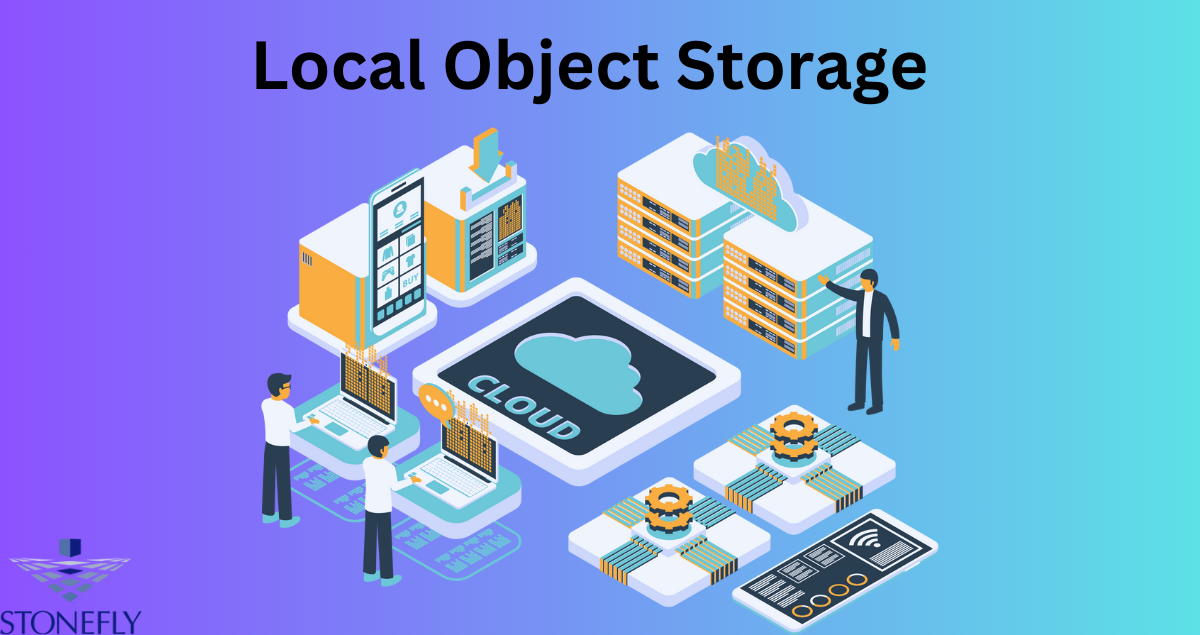Local Object Storage for Cloud What You Need to Know
In the evolving landscape of information technology, one term that’s been garnering attention is local object storage for cloud. This hybrid technology marries the convenience of cloud storage with the speed and control of Local Object Storage solutions, offering a compelling option for businesses looking to optimize their storage strategies.
In this blog post, we’ll explore what local object storage is, how it works, and why it’s gaining traction among IT professionals. Whether you’re managing terabytes of data or just getting started with cloud infrastructure, understanding local object storage could be a game-changer for your organization.
Understanding Local Object Storage
Local object storage is a technology designed to store and manage data as objects within a local environment, providing a blend of on-premises storage capabilities with cloud-like scalability. Unlike traditional storage solutions that use file or block-based systems, object storage breaks down data into unstructured objects, each containing data, metadata, and a unique identifier.
One of the key benefits of local object storage is its ability to handle large volumes of unstructured data, such as multimedia files, backups, and archives. This makes it particularly suited for industries that generate and need to retain vast amounts of data without compromising on performance.
Additionally, this storage model typically offers a cost-effective alternative to traditional cloud storage by reducing latency and improving data retrieval times. Businesses can achieve faster performance and maintain greater control over their data, while also reducing dependency on external cloud services.
Use Cases of Local Object Storage
Several industries stand to benefit from the adoption of local object storage, each leveraging its features to meet specific needs. For example, media and entertainment companies can use it to store large video files and distribute content with minimal latency, ensuring a smooth viewing experience for users.
Healthcare organizations are another sector that can benefit significantly, as they deal with large volumes of sensitive data. Local object storage provides the necessary controls for data privacy and security while still offering the scalability needed to store electronic health records and imaging files.
Real-world examples underscore the effectiveness of this technology. Consider a financial services firm that implemented local object storage to streamline the management of transactional data, achieving both cost savings and operational efficiency.
Advantages and Disadvantages
Like any technology, local object storage has its pros and cons. On the positive side, it offers increased speed and control, flexibility in managing unstructured data, and potential cost savings by minimizing cloud service expenses.
However, there are challenges as well. Implementing a local object storage solution may require significant upfront investment in hardware and infrastructure. It also demands robust data management practices to ensure data integrity and security. Finally, scaling the system might require additional resources and expertise.
Despite these challenges, the benefits often outweigh the drawbacks for businesses that require rapid access to Data and have specific storage needs.
Implementing Local Object Storage
Successfully deploying local object storage starts with a thorough assessment of your organization’s storage needs. Begin by defining objectives and identifying the types of data that will benefit most from this storage model. Consider the potential for data growth and how the system will integrate with existing infrastructure.
Security should be a top priority during implementation. Ensure that data encryption and access controls are in place to protect sensitive information. Regular audits and monitoring can also help maintain data integrity and compliance with regulatory requirements.
Lastly, establish best practices for data management, including backup and recovery plans. This will help mitigate risks and ensure seamless access to data when needed.
The Future of Local Object Storage
The future of local object storage looks promising, with several trends indicating continued growth and evolution. One such trend is the increasing adoption of hybrid cloud strategies, where businesses combine local object storage with public or private cloud services to achieve greater flexibility and resilience.
Additionally, advancements in AI and machine learning are likely to enhance the capabilities of local object storage by automating data management tasks and improving decision-making processes. This integration will enable businesses to extract more value from their data and drive innovation across various domains.
Ultimately, local object storage is poised to play a crucial role in the broader cloud ecosystem, offering businesses a versatile and efficient solution for managing their data assets.
Conclusion
Local object storage for cloud presents a unique opportunity for businesses to optimize their data management strategies. By blending the advantages of on-premises storage with cloud-like features, organizations can achieve greater control, speed, and cost-efficiency.
In summary, local object storage is a powerful tool that addresses the growing demand for efficient data management solutions. Its ability to handle unstructured data, coupled with its flexibility and scalability, makes it an attractive option for various industries.
For businesses looking to stay competitive and innovative, local object storage offers a viable pathway to achieving these goals, with the potential for significant operational benefits.
FAQs
1. What is local object storage, and how does it differ from traditional storage solutions?
Local object storage is a method of storing data as objects within a local environment, providing scalability akin to cloud storage. Unlike traditional storage solutions, which use file or block-based systems, object storage manages data as unstructured objects with metadata and unique identifiers.
2. Which industries benefit most from local object storage?
Industries that deal with large volumes of unstructured data, such as media and entertainment, healthcare, and financial services, are particularly well-suited for local object storage. These sectors can leverage its speed, scalability, and data control features to meet their specific needs.
3. What are the main advantages of implementing local object storage?
Key benefits of local object storage include increased data retrieval speed, improved control over data, flexibility in managing unstructured data, and potential cost savings by reducing reliance on external cloud services.
4. Are there any challenges associated with adopting local object storage?
Implementing local object storage may require significant upfront investment in hardware and infrastructure. It also necessitates robust data management practices to ensure data security and integrity. Scaling the system might require additional resources and expertise.
5. How does local object storage fit into the future of cloud computing?
Local object storage is expected to play a significant role in the future of cloud computing by complementing hybrid cloud strategies and integrating with AI and machine learning technologies. This will enhance data management capabilities and drive innovation across various industries.




